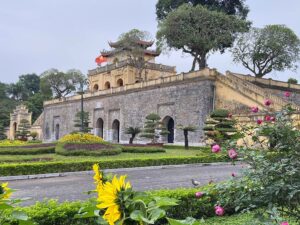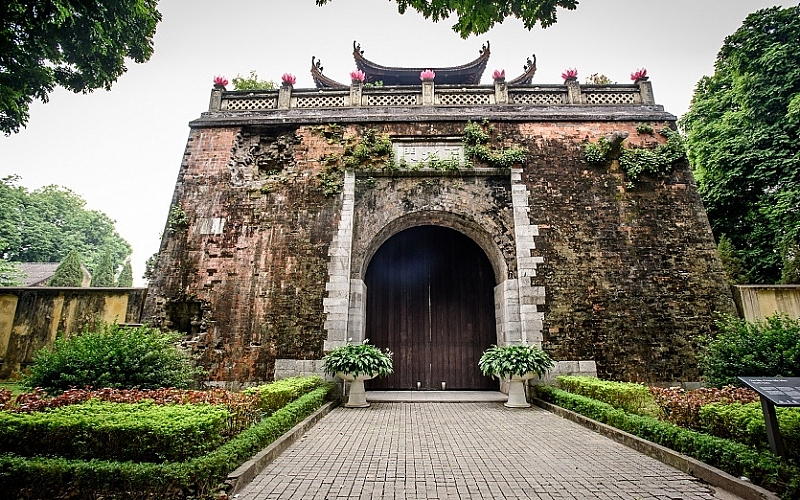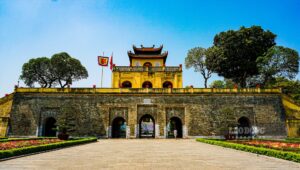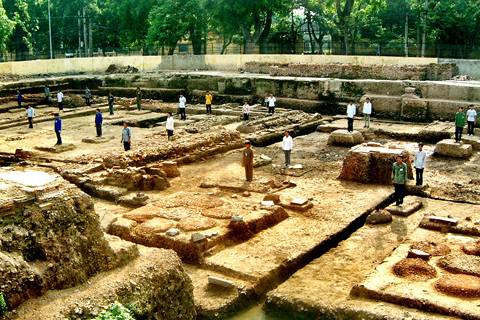The central relic area of Thang Long Imperial Citadel in Hanoi was recognized by UNESCO as a world cultural heritage in 2010 with outstanding cultural and historical criteria.
The central relic area of Thang Long Imperial Citadel in Hanoi has a total area of 18,395 hectares including the archaeological area at 18 Hoang Dieu, and the remaining relics in the Hanoi ancient citadel relic area such as: Hanoi flagpole, Doan Mon, Kinh Thien Palace, House D67, Hau Lau, Bac Mon, surrounding walls, and 8 palace gates of the Nguyen Dynasty.

In 1009, Ly Cong Uan ascended the throne and founded the Ly dynasty. In July 1010, the King announced an edict to move the capital, moving the capital from Hoa Lu, Ninh Binh to Dai La citadel. Immediately after moving the capital, Ly Cong Uan hastily built Thang Long citadel, which was completed in early 1011. When newly built, Thang Long citadel was built according to the model of Three identical citadels including: The outermost ring is called La Thanh or Citadel, surrounding the entire capital, where the entire population lives. The second circle in the middle is the royal citadel, the main court area, and the living and working place of court officials. The smallest and innermost citadel is the Forbidden City, a place reserved only for the King, Queen, royal family, and a few concubines and beauties.
During the Tran Dynasty and early Le Dynasty, the Imperial Citadel as well as the capital were built and expanded. From 1516 to 1788 under the Mac and Le Trung Hung dynasties, Thang Long citadel was destroyed many times. In early 1789, King Quang Trung moved to Phu Xuan, Thang Long was left with only Bac Thanh. During the Nguyen Dynasty, the remains of the imperial citadel were moved by the Nguyen kings to Phu Xuan to serve the construction of the new capital, only Kinh Thien and Hau Lau palaces was kept as a palace for the Nguyen kings whenever they visited the Northern citadel.

In 1805, King Gia Long demolished the walls of the old Imperial Citadel and built Hanoi citadel in French style on a smaller scale.
In 1831, King Minh Mang changed Thang Long’s name to Hanoi province.
After conquering all of Indochina, the French chose Hanoi as the capital of the French Indochina federation.
Since 1954, Hanoi became the headquarters of the Ministry of National Defense.
Thang Long Imperial Citadel is associated with more than 10 centuries of history of Thang Long, Hanoi.

Thang Long Imperial Citadel has undergone many changes, but the central position of the Imperial Citadel, especially the Forbidden Citadel, is almost unchanged. Only the internal architecture has been built and remodeled many times. At the archaeological site at 18 Hoang Dieu, layers of architectural relics and relics lie on top of each other through historical periods.

That is the unique and outstanding value of the central relic site of Thang Long Imperial Citadel – Hanoi. Here archaeologists unearthed a large number of ceramics and daily objects in the palace over many periods of time. These discoveries show that Thang Long is a center for cultural exchange with countries in the region, and receives the quintessential values of humanity.
